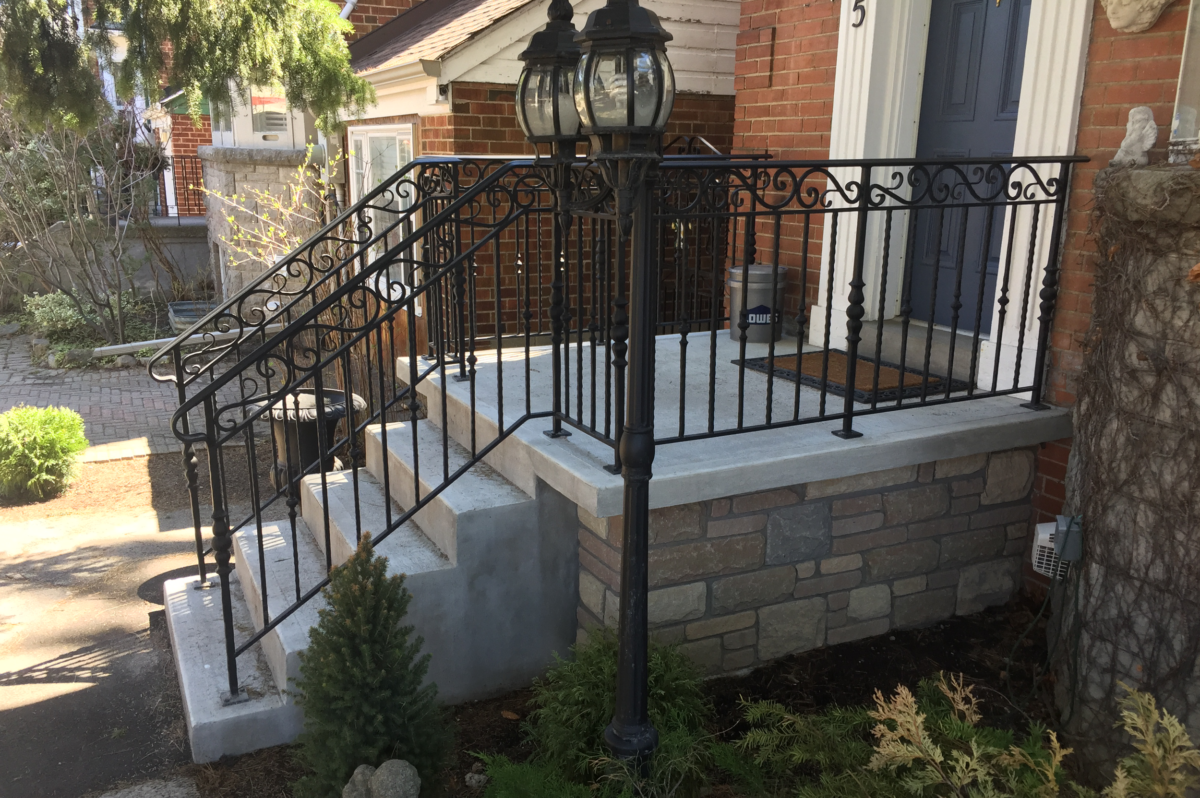Repairing Stone Work after Winter Salt Damage
An interesting and timely inquiry was forwarded to our Masonry division this past week. The client’s question had to do with a concern about salt damaging their stone pathway.
As it turns out; the client’s snow removal contractor plows and salts the rather large driveway and associated stone path leading to the front door of his commercial building.
The stone path is under ten years old, but the client noticed back in the fall; white chalky marks on the surface of the stone and cracks in the adjacent mortared joints along the pathway;.
In general terms; salt is effective for melting snow and ice above a particular temperature, and is likely the most utilized product for roads, parking lots, and many driveways; as provided by landscapers who offer plowing services, and dedicated snow removal contractors.
Many such snow removal contractors also elect to use a form of ice melting product which is less corrosive , and more pet friendly. Such products are more commonly used for residential applications. Consumers can also purchase such products through home improvement retailers or hardware stores. They certainly represent a better option where stone or bricks are concerned.
Winter salt is a corrosive product that can cause damage to various building materials over a period of time. Many people are aware that it is bad for steel car bodies, but it can also serve to damage mortar, concrete, clay bricks, and some stone products. The keyword being “some” stone products.
Many natural stone materials are not as affected by winter salt as certain softer stone, or cultured stone materials. The fact is; many hard composition, natural stone products weather and function beautifully for decades with little to no maintenance.
Man -made stone is one product as an example, that does not endure as well as say granite rock by comparison, when subjected to winter salt. Other common areas that can be damaged from winter salt over time, include brick or stone piers, found at the edges of driveways, masonry front porch and step areas, and stone or brick facades that meet driveways or walkways (where snow may accumulate).
Where bricks or stone are concerned; simply power washing the surface when weather permits, helps to maintain the product and avoid long term damage. If however; one observes that there are cracks or voids in mortar joints, or shaling of the material surface; repair work should be completed, before more extensive damage occurs.
In the instance of our client’s walkway; where voids and cracks in the mortar joints could be observed; the prescribed repair regimen would include the following:
To chisel out any deficient or void mortar areas to expose the poured cement bed beneath. If no cement bed was installed beneath the stones; they may well have to be lifted, so a proper base could be installed. Doing so; would insure that future potential for cracking would be minimised.
A proper base would consist of a finely crushed aggregate material being compacted to a minimum of six inches. In the case of a fully adhered stone pathway; a two inch bed of concrete mortar would be screeted in manageable sections beneath where the stones would be placed. Stone would be dry placed and or chiseled to make connecting pieces or edging details, prior to laying the base cement layer.
Once the walkway had been laid with stone in a progressive manner; and allowed to set; finish cement mortar could be applied between the joints. A liquid bonding agent would be applied between the joints before installing the joint mortar. In a progressive manner; the joints between stones would have the mortar piped into the joint, and then tooled to a neat uniform finish.
Once cured and dry; a masonry sealer could be applied to highlight the colours within the stone, and to provide a weather resistant finish.
If the bed beneath the stone was found to be in good order; simply removing the damaged joints and effectively tuck-pointing the deficient joints would suffice,. It would also represent a considerably less costly job.
That is why having a quality installation in the first place, insures that such a walkway will endure for many decades to come.
To summarize; natural stone is a great option in terms of appearance and long term durability. The appearance of stone, depending on colour selection,how it is cut, and the form in which it is laid; can compliment any type of architecture from traditional to contemporary, to modern designs.
Done well; a finished stone walkway, patio, or accent stonework applied to a home’s exterior; promotes the notion of quality and craftsmanship. Stone can be price competitive with many other exterior finish products; particularly when factoring the durability and maintenance over decades.
To learn more about stone walkways, patio areas, feature or retaining walls, stone barbecues, outdoor or indoor fireplaces, etc.. contact: www.avenueroadmasonry.com or visit us on Facebook.

